

— Blogs —
—Products—
 Consumer hotline +8618073152920
Consumer hotline +8618073152920 WhatsApp:+8615367865107
Address:Room 102, District D, Houhu Industrial Park, Yuelu District, Changsha City, Hunan Province, China
Product knowledge
Time:2024-10-24 15:50:12 Popularity:351
Weather station for construction site is a kind of weather monitoring system specially designed for the construction industry, which can monitor and record the weather data of the construction site in real time, including temperature, humidity, wind speed, wind direction, barometric pressure, rainfall, etc. Meanwhile, it is also equipped with particulate matter sensors and noise sensors, which provide more comprehensive environmental monitoring data. These data provide a scientific basis for construction safety and progress management.
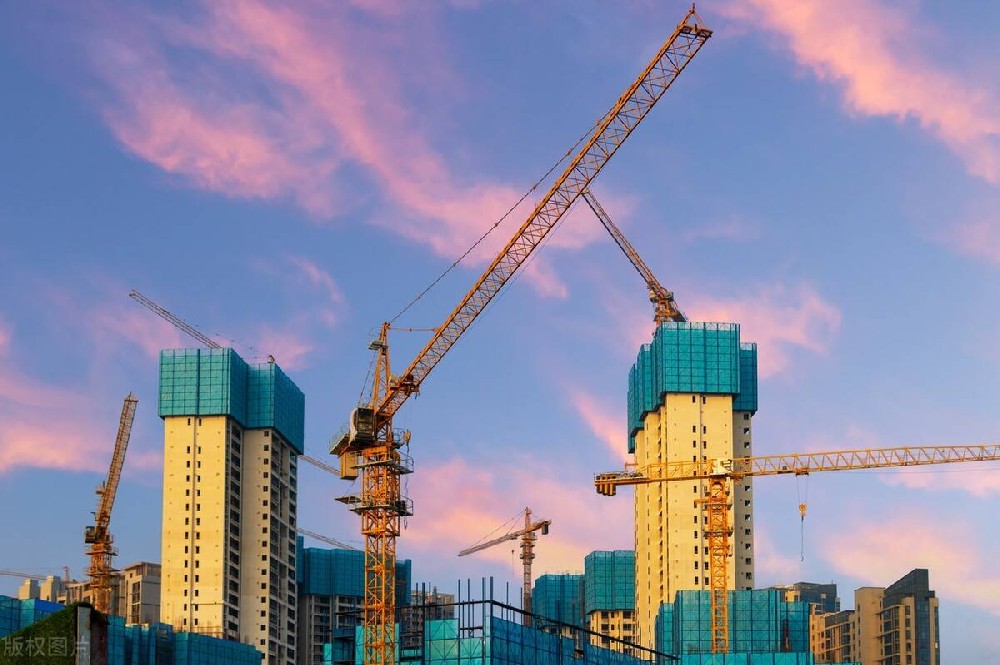
- Temperature sensor: monitors air temperature to help assess the working environment and material storage conditions.
- Humidity Sensor: Measures air humidity, which affects the concrete setting and drying process.
- Wind Speed Sensor: records the wind speed, which is critical for working at height and material transportation safety.
- Wind direction sensor: Indicates the direction of the wind, which affects the construction layout and safety management.
- Barometric Pressure Sensor: Measures atmospheric pressure, which is used for weather forecasting and construction plan adjustment.
- Rainfall Sensor: monitors the amount of rainfall, which affects outdoor work and earthmoving projects.
 |  |  | 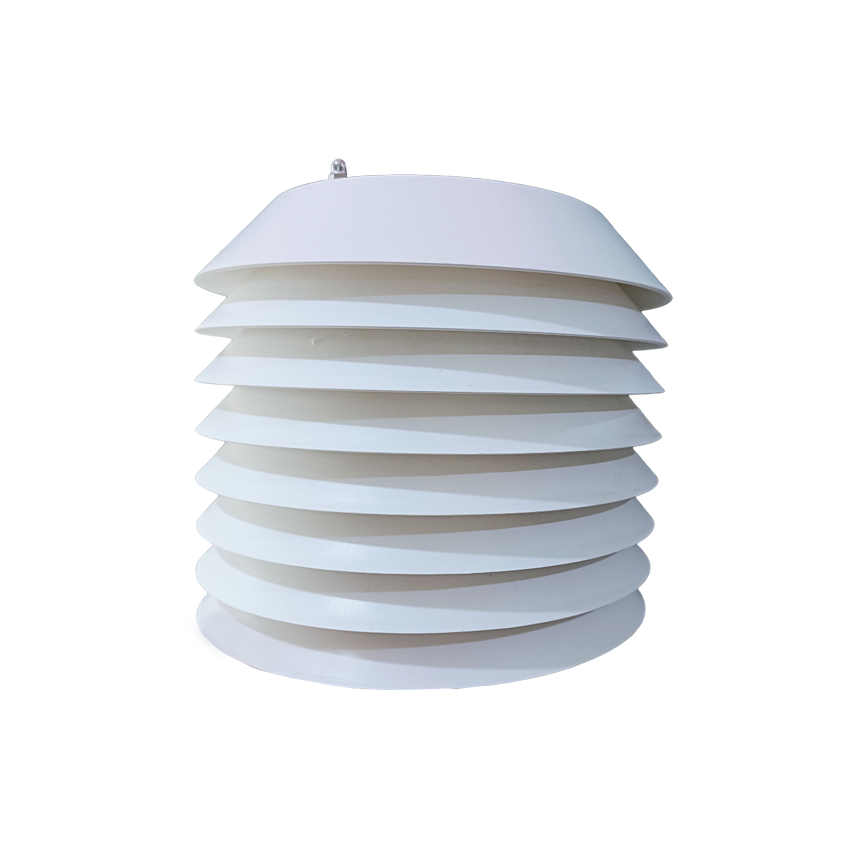 |  |
| Anemometer Wind Speed sensor | Wind direction sensor | Tipping bucket rain gauge sensor | PM2.5/PM10 Integrated Sensor | Piezoelectric Rain Gauge |
 |  |  | 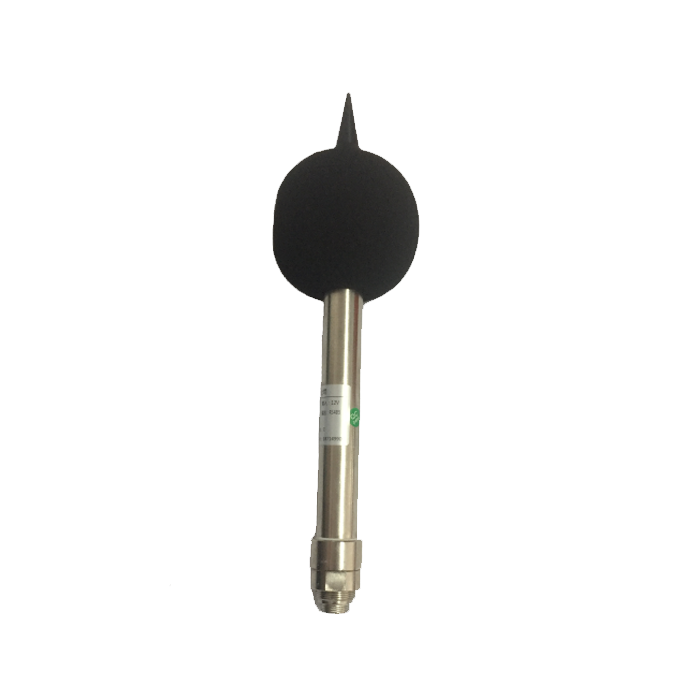 |  |
| Atmospheric Temperature Humidity air pressure Sensor | ultrasonic wind speed and direction sensor | 5 in1 Ultrasonic Weather Station Sensor | Noise sensor | 7 in1 Ultrasonic Weather Station Sensor |
- PM2.5 sensor: monitors the concentration of particles in the air with a diameter less than or equal to 2.5 micrometers, which have a greater impact on human health.
- PM10 sensor: monitor the concentration of particles in the air with a diameter of less than or equal to 10 microns, which usually come from road dust, construction dust, etc.
- Noise Sensor: Monitor the noise level on the construction site to ensure that the noise is within the specified limits and to reduce the impact on the neighboring residents and workers.
1. Real-time monitoring and early warning: capable of real-time monitoring of a variety of meteorological, particulate matter and noise parameters, and issue an alarm when the set threshold is exceeded. 2.
2. High precision and stability: adopting high precision sensors and advanced calibration technology to ensure the accuracy and stability of data. 3.
3. Durability and Adaptability: Rugged and durable design, able to adapt to the complex environment and harsh weather conditions of construction sites.
4. Data transmission and storage: Equipped with data acquisition system and transmission module to realize real-time data transmission and storage for remote monitoring and analysis.
5. Portability: Easy to move and deploy in different locations of the construction site.
6. Intelligent management: Supporting LED screen or Android screen display, it is easy for site personnel to intuitively understand the weather conditions, and at the same time, it supports data storage, analysis and remote access, which is convenient for management to make adjustments.

The data transmission of Weather station for construction site is usually realized through wireless network (such as Wi-Fi, Bluetooth, GPRS, 3G, 4G, 5G, etc.) or wired network. The data can be transferred to a centralized database or cloud platform for real-time monitoring and remote access.
1. Environmental safety monitoring: real-time monitoring of meteorological, particulate matter and noise conditions, timely detection of potential safety hazards, to ensure the safety of the construction environment and the surrounding residents.
2. schedule management: through recording and analyzing meteorological data, predicting future weather conditions, reasonably arranging the work plan, improving construction efficiency, and ensuring that the project is completed on time.
3. Quality control: Different meteorological and particulate conditions may affect the construction quality. Through the monitoring of meteorological stations, the construction program can be adjusted in time to ensure that the construction quality meets the requirements.
4. Resource management: Reasonable deployment of human and material resources based on meteorological, particulate matter and noise data, e.g. taking measures in advance to protect the equipment and materials at the construction site before the upcoming windy, stormy or high particulate matter concentration weather.
5. Environmental protection: monitor dust and air quality to ensure compliance with environmental standards and reduce the impact on the surrounding environment.
6. Cost control: Optimize the allocation of resources through accurate weather forecasting, such as rationally arranging the use of water resources and reducing unnecessary maintenance costs.
1. Decision-making support: Provide site managers with accurate meteorological, particulate matter and noise warning information to support them in making reasonable decisions. 2. Optimization of construction plans: Based on real-time weather forecasts, optimize construction plans.
2. Optimize the construction plan: Adjust the construction progress and operation plan according to the real-time data to improve the working efficiency and reduce the delay caused by weather, particulate matter or noise problems.
3. Ensure construction safety: issue timely alerts through the early warning system to remind construction managers to take protective measures in hazardous weather, high particulate concentration or high noise conditions to ensure the safety of construction site personnel.
4. Compliance: Satisfy industry safety norms and environmental protection requirements, and prove compliance with operation standards through data records.
The Construction Site Weather Station is a comprehensive environmental monitoring system that provides comprehensive weather, particulate matter and noise data by integrating multiple sensors to ensure construction safety, efficiency and environmental protection. It utilizes modern communication technology to achieve instantaneous data transmission and provide accurate weather information support for construction management, making it an indispensable safety and efficiency enhancement tool for the modern construction industry. Through effective data transmission and monitoring, Weather station for construction site plays an irreplaceable role in construction management and helps managers make more scientific, safe and efficient decisions.

- Automatic calibration: Some high-end weather stations are equipped with automatic calibration function to ensure the accuracy of data after long time operation.
- Remote Maintenance: Remote diagnosis and maintenance through the Internet reduces the number of on-site maintenance and cost. 2.
- Data Visualization: Provide rich charts and reports to visualize the trend of meteorological, particulate matter and noise data.
- Data analysis: Built-in data analysis tools to help users identify data anomalies and trends and provide decision support.
- Multi-site management: Support centralized management and monitoring of multiple site weather stations to facilitate unified management of large-scale construction projects.
- Multi-user privilege: Support different user privilege settings to ensure data security and management efficiency.
- Local storage: Built-in high-capacity storage device ensures long-time historical data preservation.
- Cloud Backup: Supports automatic data backup to the cloud to prevent data loss.
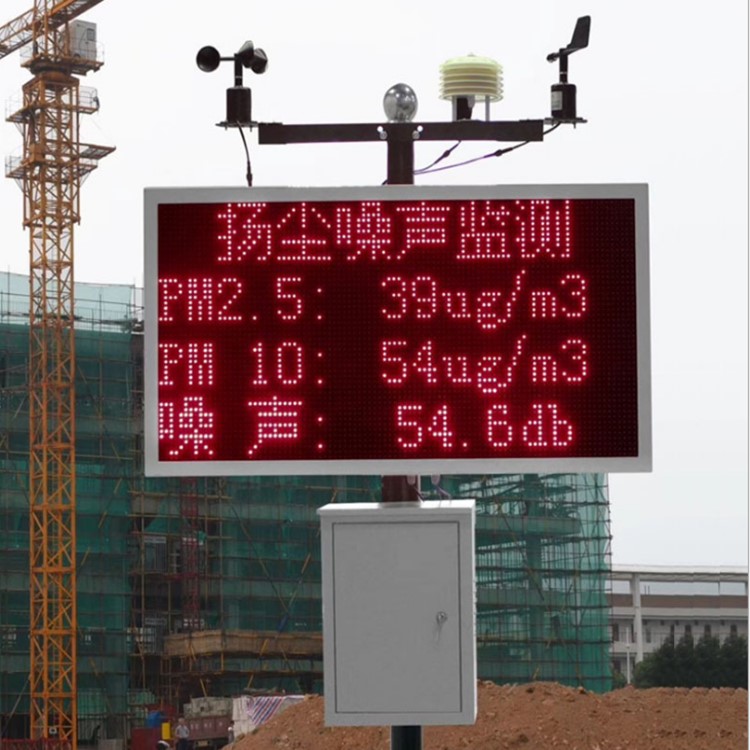
- Case: In a large-scale urban construction project, a construction site weather station was used to monitor weather conditions and particulate concentration, effectively reducing dust pollution and ensuring construction safety and progress.
- Effect: Through real-time data monitoring, the project team adjusted the construction plan in a timely manner, avoiding several weather-related work stoppages, and eventually completed the project ahead of schedule.
- Case: In a highway construction project, a weather station monitored wind speed and rainfall to help the project team prepare for bad weather and protect construction equipment and materials.
- Effect: By giving advance warning, the project team avoided many accidents caused by excessive wind speeds and ensured the safety of construction workers.
- Case: In a residential community development project, the weather station monitors the noise level to ensure that the construction noise is within the specified range, which reduces the disturbance to the neighboring residents.
- Effect: Through real-time monitoring and management, the project team received favorable comments from the surrounding residents and enhanced the social image of the project.
- Artificial Intelligence: Combined with AI technology, it realizes smarter data analysis and prediction, and provides more accurate decision support.
- Automation control: Integrate with automatic control system to realize automatic adjustment under weather conditions, such as automatically closing doors and windows and starting dust removal equipment.
- IoT: Realize more sensors interconnection through IoT technology to provide more comprehensive environmental monitoring data.
- Big Data: Utilizing big data analysis technology to mine the trends and laws behind the data to provide deeper insights into the construction industry.
- Green Building: Data from weather stations can help designers and engineers optimize building design and improve the energy efficiency and environmental performance of buildings.
- Sustainable Development: By monitoring and managing the environmental impact of construction sites, it promotes the sustainable development of the construction industry.
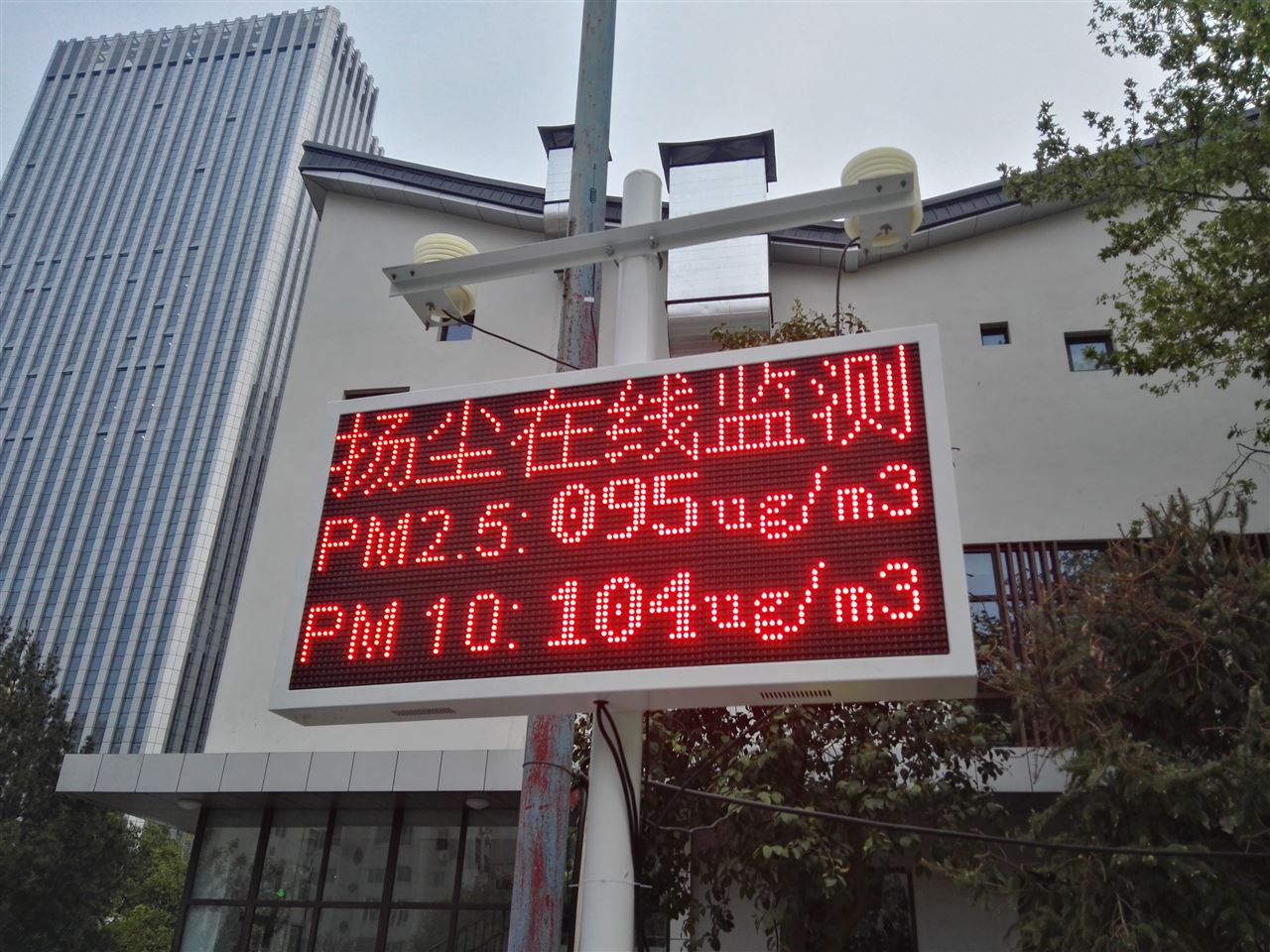
- Solution: Calibrate sensors regularly to ensure data accuracy. Use high-quality sensors and calibration equipment to reduce errors.
- Solution: Establish a comprehensive maintenance program to regularly check and maintain the equipment. Train site staff to improve their maintenance skills. 3.
- Solution: Choose a stable communication method, such as 4G/5G network. Set up redundancy mechanism for data transmission to ensure reliable data transmission.
- Solution: Adopt solar charging system to ensure that the equipment can work normally without external power supply. Backup batteries can provide power when solar energy is insufficient.
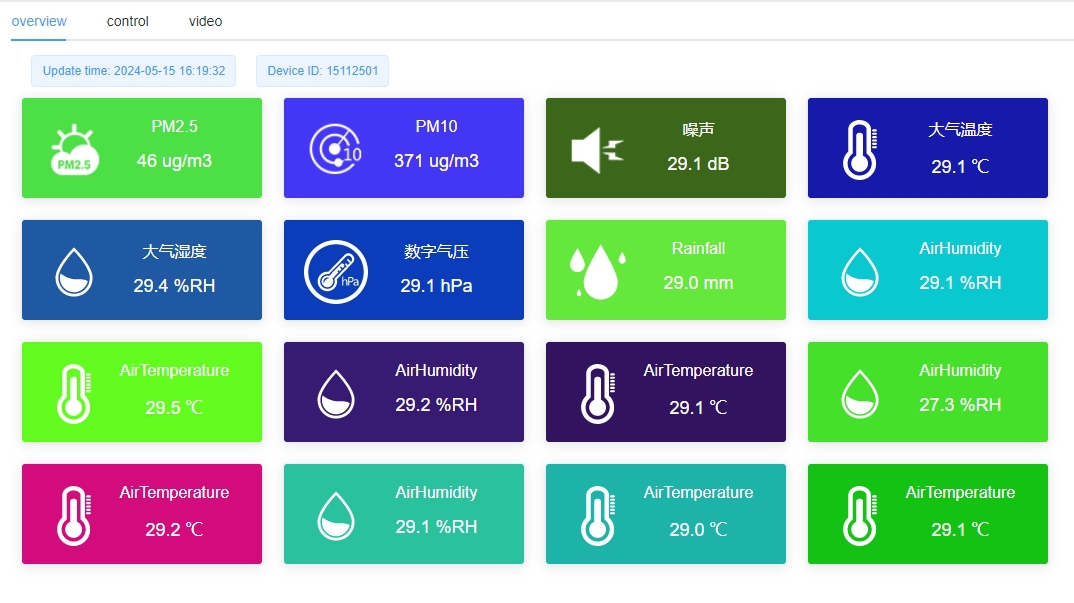
Summarize
Construction site weather station not only provides comprehensive weather, particulate matter and noise monitoring data, but also helps construction projects achieve higher safety and efficiency through advanced technology and intelligent management. Its role in construction management is becoming more and more prominent, and it has become an indispensable and important tool in the modern construction industry. Through effective data monitoring and management, the construction site weather station provides solid technical support for the smooth running of the project.
Related recommendations
Sensors & Weather Stations Catalog
Agriculture Sensors and Weather Stations Catalog-NiuBoL.pdf
Weather Stations Catalog-NiuBoL.pdf
Related products
 Combined air temperature and relative humidity sensor
Combined air temperature and relative humidity sensor Soil Moisture Temperature sensor for irrigation
Soil Moisture Temperature sensor for irrigation Soil pH sensor RS485 soil Testing instrument soil ph meter for agriculture
Soil pH sensor RS485 soil Testing instrument soil ph meter for agriculture Wind Speed sensor Output Modbus/RS485/Analog/0-5V/4-20mA
Wind Speed sensor Output Modbus/RS485/Analog/0-5V/4-20mA Tipping bucket rain gauge for weather monitoring auto rainfall sensor RS485/Outdoor/stainless steel
Tipping bucket rain gauge for weather monitoring auto rainfall sensor RS485/Outdoor/stainless steel Pyranometer Solar Radiation Sensor 4-20mA/RS485
Pyranometer Solar Radiation Sensor 4-20mA/RS485
Screenshot, WhatsApp to identify the QR code
WhatsApp number:+8615367865107
(Click on WhatsApp to copy and add friends)